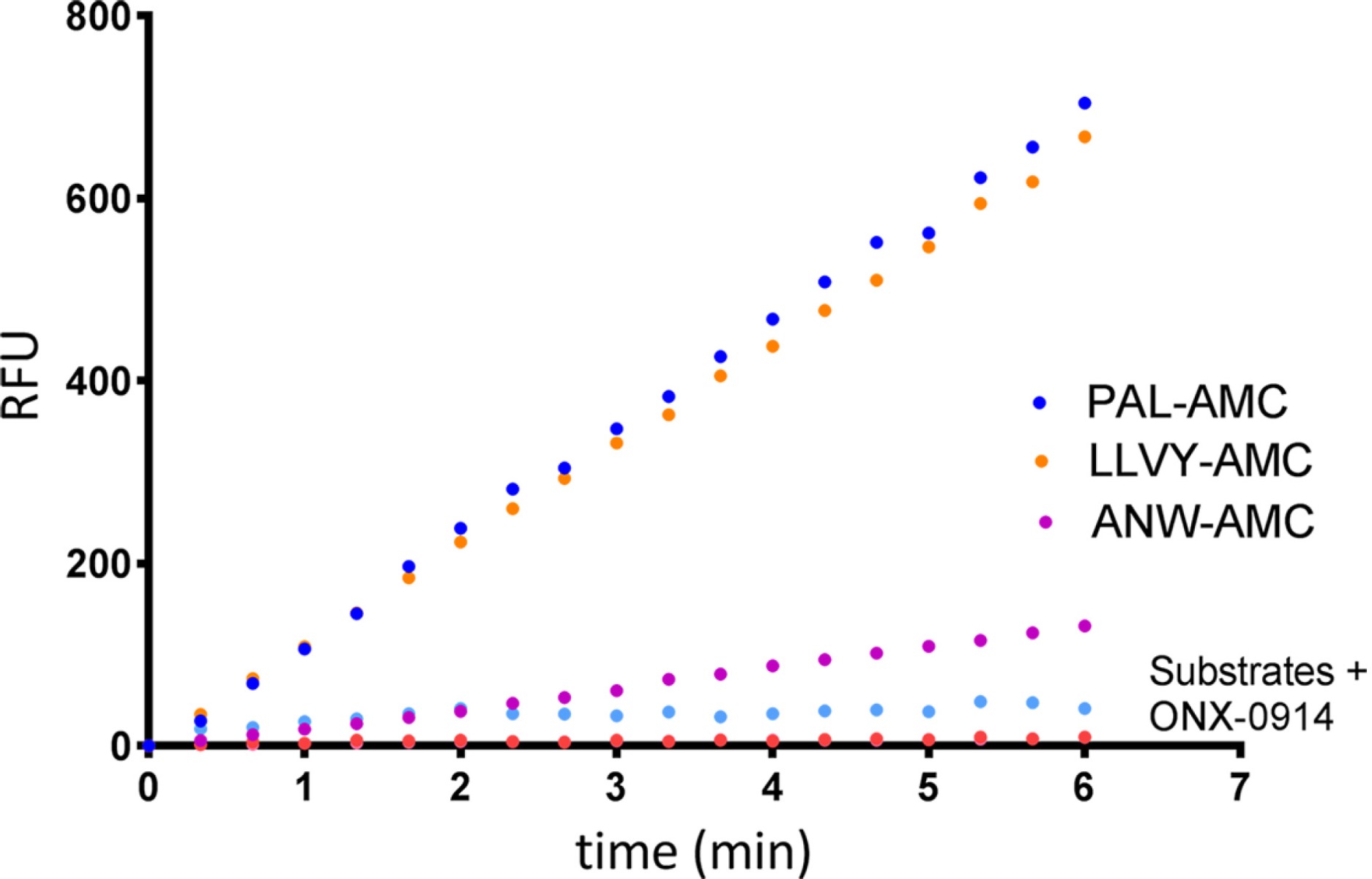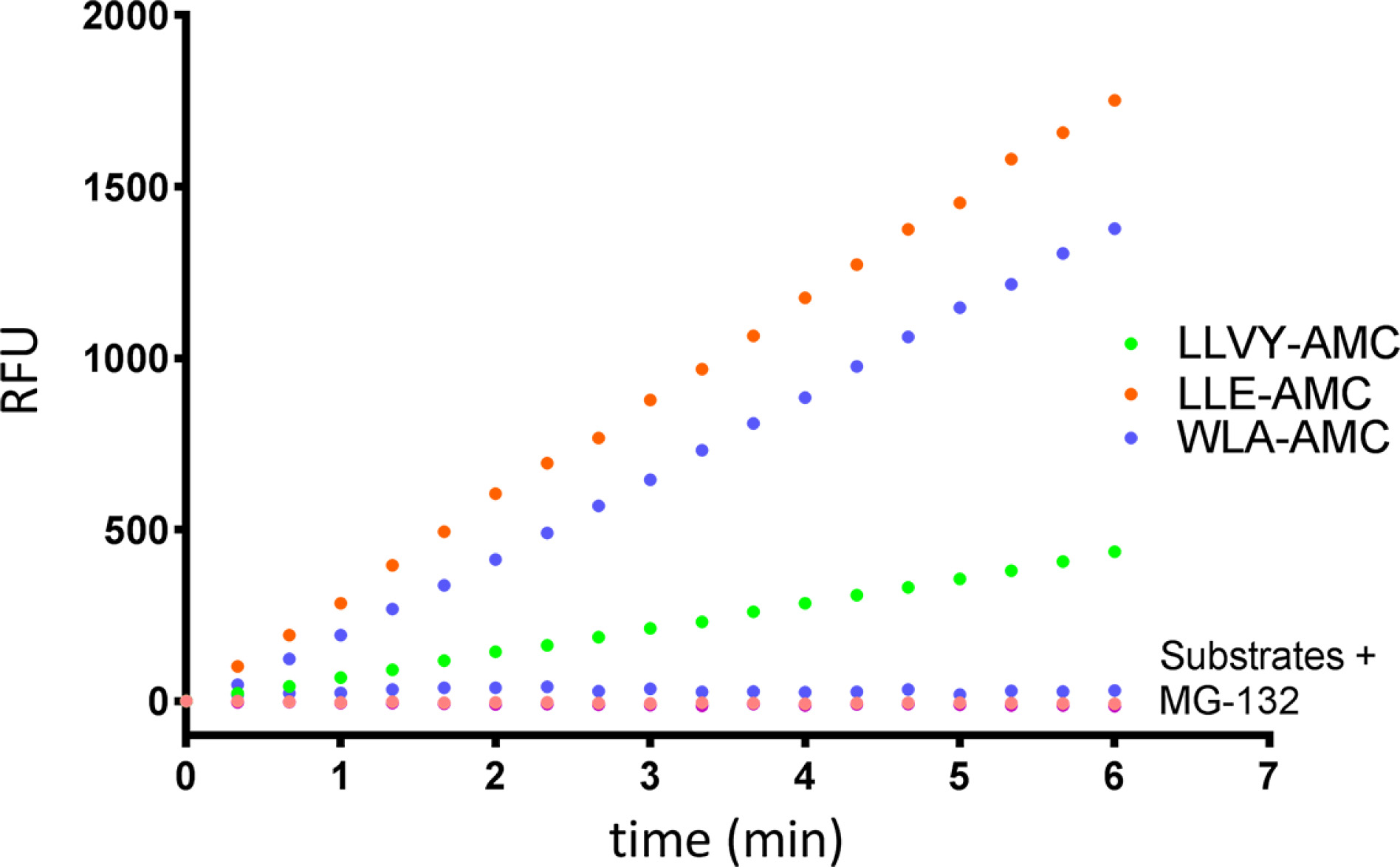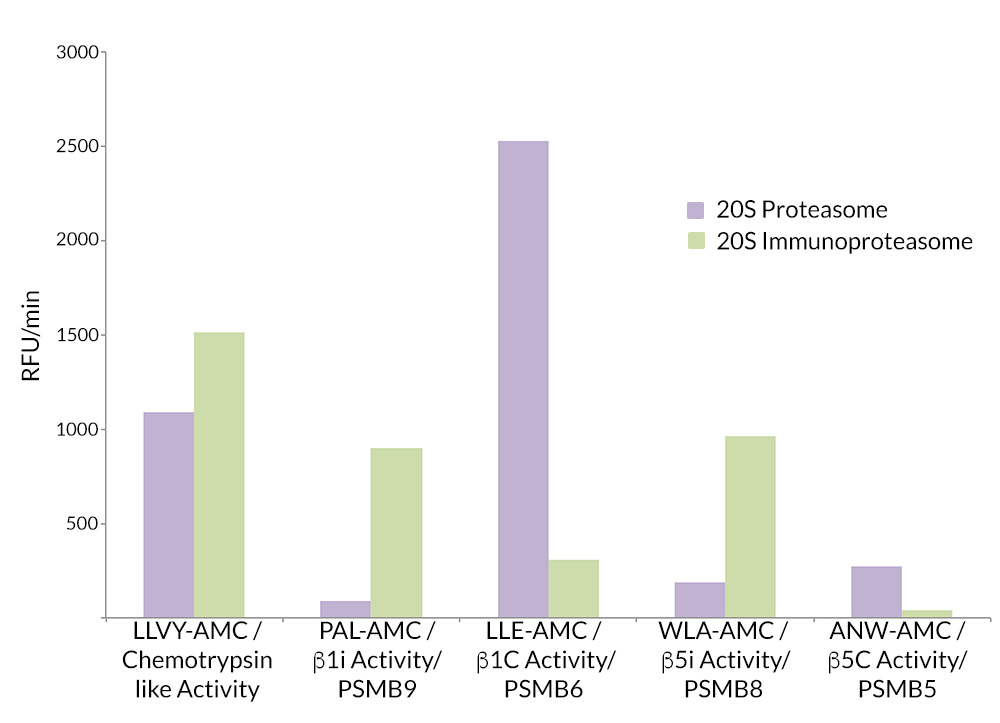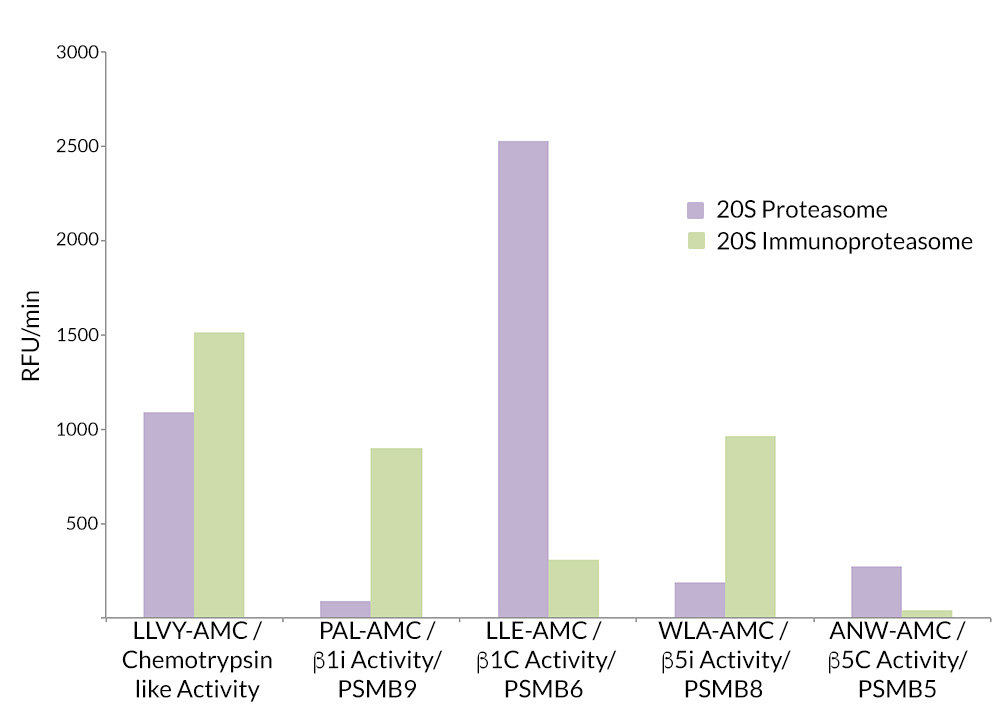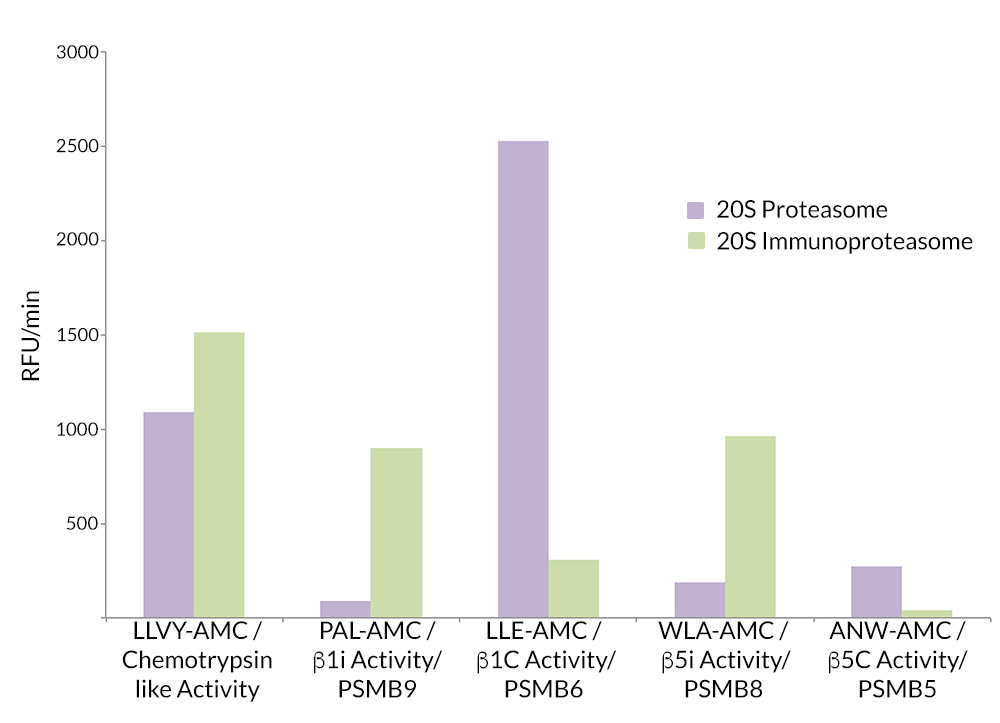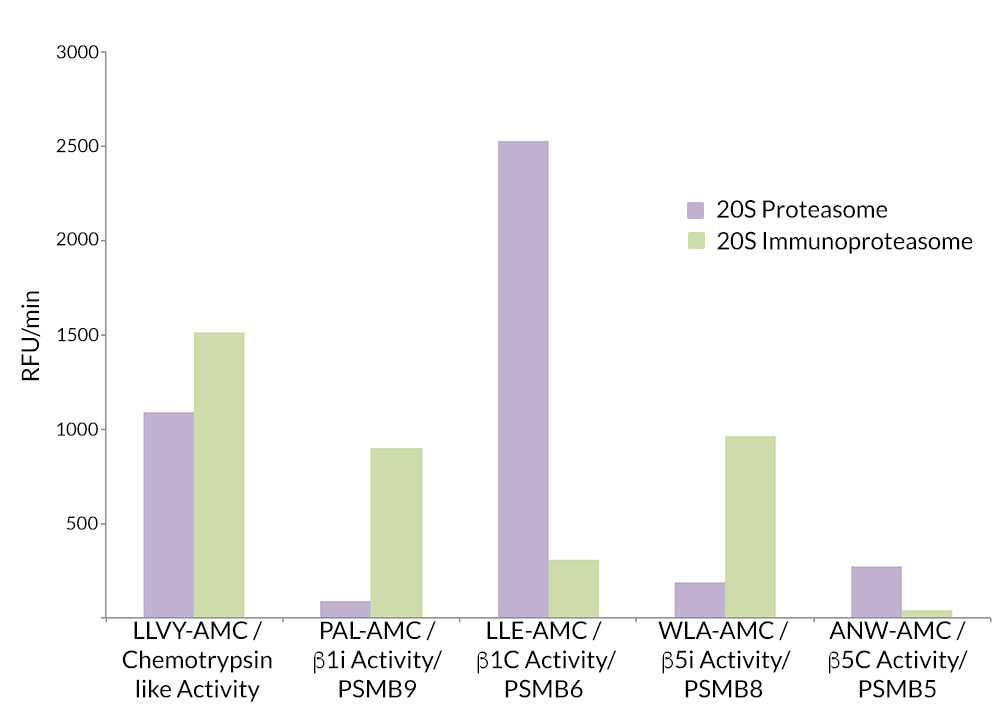
20S Immunoproteasome (mouse) (untagged)
SBB-PP0083
Product group Proteins / Signaling Molecules
Overview
- SupplierSouth Bay Bio
- Product Name20S Immunoproteasome (mouse) (untagged)
- Delivery Days Customer10
- CertificationResearch Use Only
- Estimated Purity>92%
- Scientific DescriptionProtein. Mouse 20S Immunoproteasome. Source: Mouse Spleen. Liquid. In 50mM HEPES pH 7.5, 100mM sodium chloride, 1mM TCEP. Purity: >92% (SDS-PAGE). The 20S immunoproteasome is structurally similar to constitutive 26S proteasome. The 20S core of immunoproteasome contains two outer rings composed of alpha-subunits, and two internal 7-subunit containing rings each possessing 3 specific subunits responsible for proteasome catalytic activity. In immunoproteasomes these subunits (beta1, beta2, beta5) are replaced by three inducible subunits: PSMB9, PSMB10 and PSMB8, (beta1i, beta2i, beta5i). These stress-induced subunits allow for the production of MHC-1 associating peptides, which are displayed as antigens on the cell surface. These displayed peptides can then be recognized by immune surveillance CD8 T cells. 20S immunoproteasome is recognized as a strong drug target for autoimmune disease and cancer. - The 20S immunoproteasome is structurally similar to constitutive 26S proteasome. The 20S core of immunoproteasome contains two outer rings composed of alpha-subunits, and two internal 7-subunit containing rings each possessing 3 specific subunits responsible for proteasome catalytic activity. In immunoproteasomes these subunits (beta1, beta2, beta5) are replaced by three inducible subunits: PSMB9, PSMB10 and PSMB8, (beta1i, beta2i, beta5i). These stress-induced subunits allow for the production of MHC-1 associating peptides, which are displayed as antigens on the cell surface. These displayed peptides can then be recognized by immune surveillance CD8 T cells. 20S immunoproteasome is recognized as a strong drug target for autoimmune disease and cancer.
- Storage Instruction-80°C
- UNSPSC12352202

